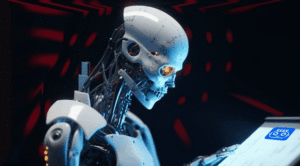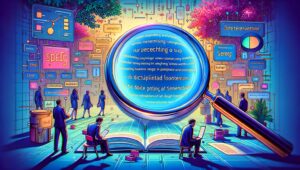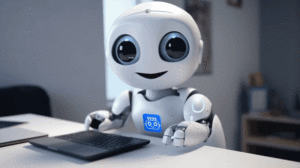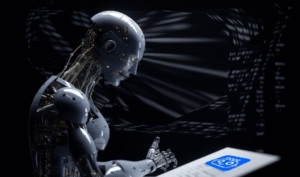Have you ever read something online and thought, “Hmmm, this doesn’t quite sound like it was written by a person”? If you want to learn how to identity AI-generated text, then read on.
Sometimes we need to know whether those smooth-talking words were crafted by a human or cranked out by a clever computer program.
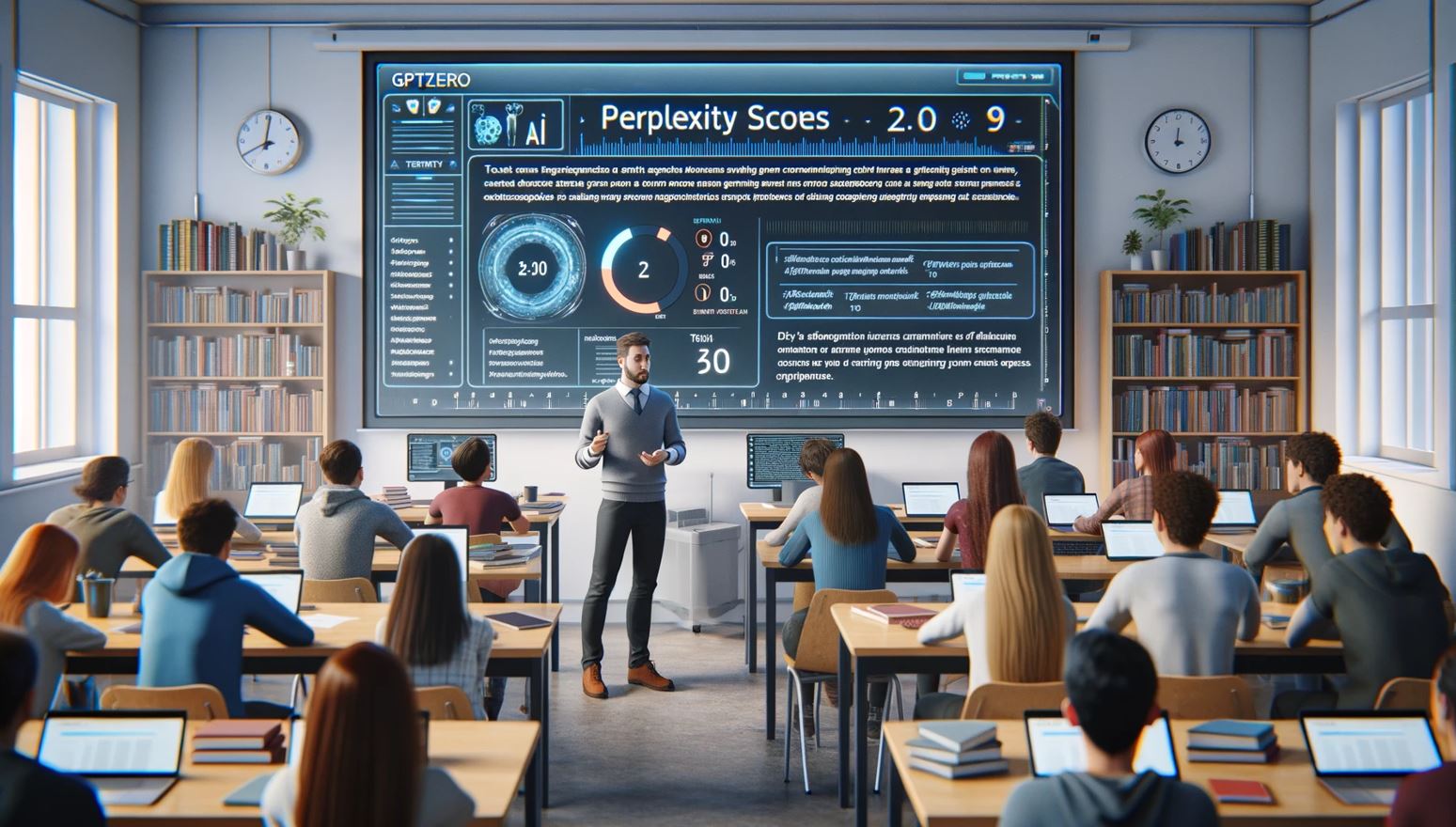
Try these new AI-powered tools:
- 5 Best AI Detectors To Unmask AI-Written Content With Accuracy
- 5 Best AI Writers To Boost Your Productivity And Content Quality.
- This "Secret AI Writer" Can Bypass AI Detection Like A Pro.
Did you know that one big giveaway of robot-written text is that it can seem kinda …. off? Like, the sentences flow too perfectly or they just don’t pack that emotional punch only real people bring to the table.
Let’s face it – machines are smart but not exactly Shakespeare when it comes to feelings!
So what’s in store for you with this article? We’ll dive into some super handy tips and tricks on how to spot text written by our silicon pals. By the end of this blog post, you’ll be like a detective for AI-generated content – ready to sniff out the difference between human heartstrings and computer code.
Continue reading to learn how to identify AI-generated text
Article At-A-Glance
- AI-generated text can be too perfect or lack emotion, so check if sentences flow naturally and carry human feelings.
- Use tools like Copyleaks, Originality AI, GPTZero, and Content at Scale AI Detector to find out if the text is written by a computer.
- Train your eyes to spot oddities in writing such as weird facts, repeated phrases, or too-long sentences without breaks.
- Always verify who wrote the piece and where it came from to ensure it’s coming from a credible source.
- Keep an eye on ethical concerns with AI text like spreading misinformation or lacking originality. Use tech wisely.
Table Of Contents
How To Identify AI-Generated Text
Ever had that moment where you’re reading something and a little voice in your head goes, “Hmm, did a robot write this?” You’re not alone! With AI popping up like mushrooms after rain—crafting everything from poetry to news—it’s getting trickier to tell if it’s man or machine behind the text.
Now, I’m about to throw some light on the detective work we can all do to sniff out those cleverly coded words. Let’s embark on this sleuthing adventure together and uncover the digital fingerprints left behind by our silicon friends.
Using Detection Tools
Okay, let’s figure out how AI detection tools can spot AI-written stuff. It’s kind of like playing detective with words! These smart tools look for clues that show if a computer or a person wrote something.
- Get to know the best tools. Copyleaks and Originality AI are tops for sniffing out AI text. They’re like super-smart bloodhounds but for finding sneaky AI writing!
- Understand what they do. These detectors scan your text, hunting for tell-tale signs of AI work. Imagine them wearing detective hats, peeking at every word with a magnifying glass.
- They’re not plain old plagiarism checkers. Nope, these clever gizmos focus on how words and sentences hang together.
- Look under the hood. The Harvard/MIT tool is really cool—it lights up words like a Christmas tree to show which bits might be AI-made.
- Yep, they’re getting smarter. With six different tools already tested, we know folks are working hard to make these detectors even better.
- It’s all about patterns. Think of it as the rhythm in music. If the beat is too perfect, it might be a bot drumming away.
Training The Human Eye
Training the human eye to spot AI-generated text is pretty neat. It’s kind of like being a detective but for words.
- Look closely at how the sentences flow together. If they seem too perfect or a bit off, that might be a clue.
- Eyes open for weird facts or things that don’t make sense. Computers can get things wrong sometimes.
- Watch out for areas with no feelings. AI often has a tough time sounding like a real person with real emotions.
- Notice if it repeats itself. Like when someone tells the same story too much, AI can do that with words.
- Check for super long sentences that don’t take a breath. When everything runs on and on, it could be computer talk.
- Practice guessing and then checking if you’re right. You’ll get better the more you play this game.
Analyzing Language And Fluency
So you’ve trained your eyes to spot oddities in text. Next up, let’s talk about digging into how the words flow. AI can be really good at spitting out sentences that sound okay, but sometimes it doesn’t get language fluency quite right.
You might read a piece and nothing jumps out as wrong—but the rhythm is off or it feels too stiff.
To figure this out, look for places where things seem too perfect or weirdly structured. Even though AI tries hard, it may use fancy words in simple spots or repeat phrases because they’re safe bets.
To figure this out, look for places where things seem too perfect or weirdly structured. Even though AI tries hard, it may use fancy words in simple spots or repeat phrases because they’re safe bets.
Think of it like a song—if the tune doesn’t have ups and downs, it might not have been written by a human hand! Remember what we know: humans are great at sensing when something’s just not natural.
That gut feeling plays a big role in spotting text that an AI generates without any human touch-ups or edits.
Checking For Repetitive Language
Watch out for words that show up too much in the text. This could be a sign it’s made by AI. These clever programs sometimes get stuck on certain phrases because they don’t know as many words as we do.
Imagine like having only one crayon to draw with – you’re going to see a lot of the same color, right? Some smart folks have even built tools that can scan writing and light up those repeats like a Christmas tree.
Let’s say you find yourself reading something and think, “Hey, didn’t I just read that?” That’s your cue to look closer. You might just catch an AI in the act! Now, we’ve talked about finding echoes in the text—let’s move on and dig into figuring out if what you’re reading is coming from real people or just some robot pretending to be one.
Verifying Sources And Author Credibility
It’s kind of like being a detective, really. You stumble upon a juicy piece of text, but hold on – is it the real deal? Before you trust what you’re reading, do a little digging. Find out who wrote it and where it came from.
Trustworthy sources have names that ring bells or they’ve been around the block – think established newspapers or famous authors.
Now and then, even smart folks get fooled by slick AI words pretending to be human-made. So, don’t just nod along. Check if the author has other writings or if an actual person stands behind those fancy sentences.
If something feels off – maybe too perfect or just plain weird – your gut might be onto something! Authenticity matters big time in this game because nobody wants to pass on fake news by accident, right?
Best AI Content Detection Tools
You’re probably squinting at your screen like, “But how do I actually spot the robot in the room when it comes to text?” Well, hold onto your detective hats because we’ve got gadgets for that.
Picture this: a suite of savvy AI content detection tools that swoop in to save the day (and our sanity) from being duped by too-smart-for-their-own-good machines.
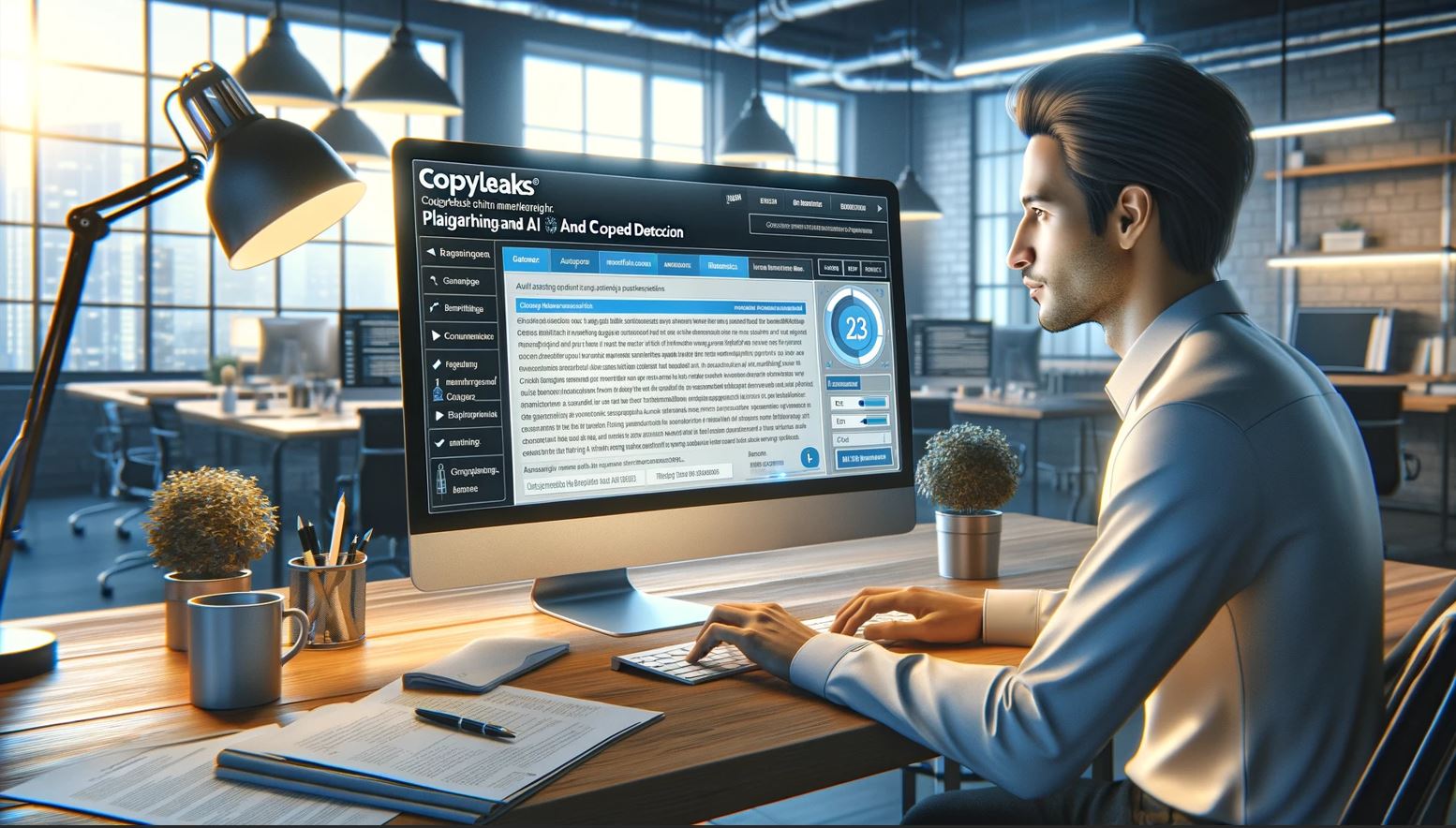
Copyleaks
Need to spot text a computer made? Copyleaks has your back. This tool shines bright as the most accurate one out there, thanks to a study that put it at the top. It’s as if you have a super-smart friend who can sniff out AI words and copy stuff in no time flat.
It works by using smart computer thinking—AI-powered algorithms—to look at what you give it. And get this—it not only spots AI-written text but also checks for plagiarism to make sure everything is original.
So if you want peace of mind when hunting for sneaky AI content or borrowed phrases, Copyleaks is your go-to helper.
Originality AI
So, you’ve got a bunch of text and you’re not sure if it’s from a human or a clever AI. Well, let me tell you about Originality AI – your new best buddy for sorting this out. This tool is like a super-smart detective that digs into your content to find hidden clues of AI trickery.
It’s been fed loads of data, labeled as either “human-generated” or “AI-generated,” so it knows exactly what to look for.
Think of Originality AI as the Swiss Army knife for anyone creating content. Whether you’re writing articles, doing homework, or just making sure nobody’s pulling a fast one on you with robot words—it can sniff out copied stuff and even check if sentences flow as they should.
And yeah, it helps make sure search engines see your work as the real deal made by humans. Now let’s move on and chat about GPTZero.
GPTZero
GPTZero is pretty cool—it’s a tool that can tell if a human or an AI wrote something. Think of it like a detective but for words. This smart cookie uses something called perplexity to figure out if the text you’re reading came from someone’s brain or a computer program.
Now, why does this matter? Well, teachers and students are giving GPTZero high-fives because it helps keep things fair in school. Even the big shots at the American Federation of Teachers teamed up with GPTZero.
They want to make sure everyone knows who’s doing their own homework—and who might be getting help from a robot!
Content at Scale AI Detector
Moving from tools like GPTZero, let’s talk about Content at Scale AI Detector. This tool is super smart – it catches AI-written text almost all the time with a 98% accuracy rate! It’s as if you have an eagle eye for spotting robot writing.
And guess what? It got its skills by studying billions of pieces of writing, even stuff from big brains like ChatGPT and Claude.
Now, you might think this is some high-tech thing that only computer whizzes can use, but nope—anyone can use it because it’s based in the cloud. That means you don’t have to download anything fancy, just hop online and boom – start detecting.
What’s awesome is this detector knows exactly how to find words spun by machines because it was made to recognize patterns from all sorts of AI systems out there making content.
ContentAtScale AI: Learn More »
What Is AI-Generated Text?
Ever stumbled upon a piece of writing so perfect that it feels almost..too smooth? That’s often the handiwork of AI-generated text – words strung together by clever algorithms that mimic human touch without ever needing a coffee break.
Dive in as we unravel how these digital maestros are crafting stories and blurbs that might just fool us all. (Spoiler alert: They’re already among us!) Keep reading to become your very own AI detective!
Definition Of AI-Generated Text
AI-generated text is what you get when computers write stuff. It’s kind of like how a robot makes things. Only this time, the robot uses words instead of metal parts. The computer looks at tons of things humans have written before and then tries to make new sentences that sound real.
Think about ChatGPT—it’s a tool that takes what you ask and comes up with something to say back. Just type in your question, and boom, out pops an answer just like someone typed it out for you.
Think about ChatGPT—it’s a tool that takes what you ask and comes up with something to say back. Just type in your question, and boom, out pops an answer just like someone typed it out for you.
This computer writing can show up all over the place—like chatbots that help you shop online or give advice on websites. It’s also behind articles and stories—yes, even machines can try their hand at being creative! AI isn’t perfect though because sometimes the words it picks are a bit off or feel weird because there aren’t actual feelings behind them.
But hey, it’s still pretty cool (and a little freaky) how smart these programs are getting at playing with language!
Types Of AI-Generated Text (Chatbots, Literature, News Articles, Etc.)
AI can write almost anything nowadays, from a poem to a news report. It’s as if you have a robot that can turn thoughts into words on paper or the screen. Let’s dive into the different sorts of writing these clever machines are churning out:
- Chatbots. You’ve probably talked to one without even knowing it. They’re all over customer service pages, ready to chat and help you out.
- Literature. Yes, AI is getting creative too! It can write stories and poems that might just surprise you with their depth.
- News articles. Some articles online were written by AI, not humans. They take information and turn it into news reports.
- Social media posts. Companies use AI to post cool stuff on Facebook or Twitter. It looks like a person wrote it!
- Marketing content. Need catchy descriptions for products? AI can whip up some great ones really fast.
- Emails. Businesses sometimes let AI write emails. These aren’t just any emails—they sound personal and friendly.
- Educational materials. Study guides or summaries made by AI help students learn new stuff quickly.
- Code writing. Not just words—AI can write computer code too! This helps programmers do their jobs faster.
The Impact Of AI-Generated Text
The sneaky world of AI-generated text is rocking the boat—spawning everything from fake news to creativity crises.
So stick around, we’re about to dive deep into this digital Pandora’s box and see what’s really up!
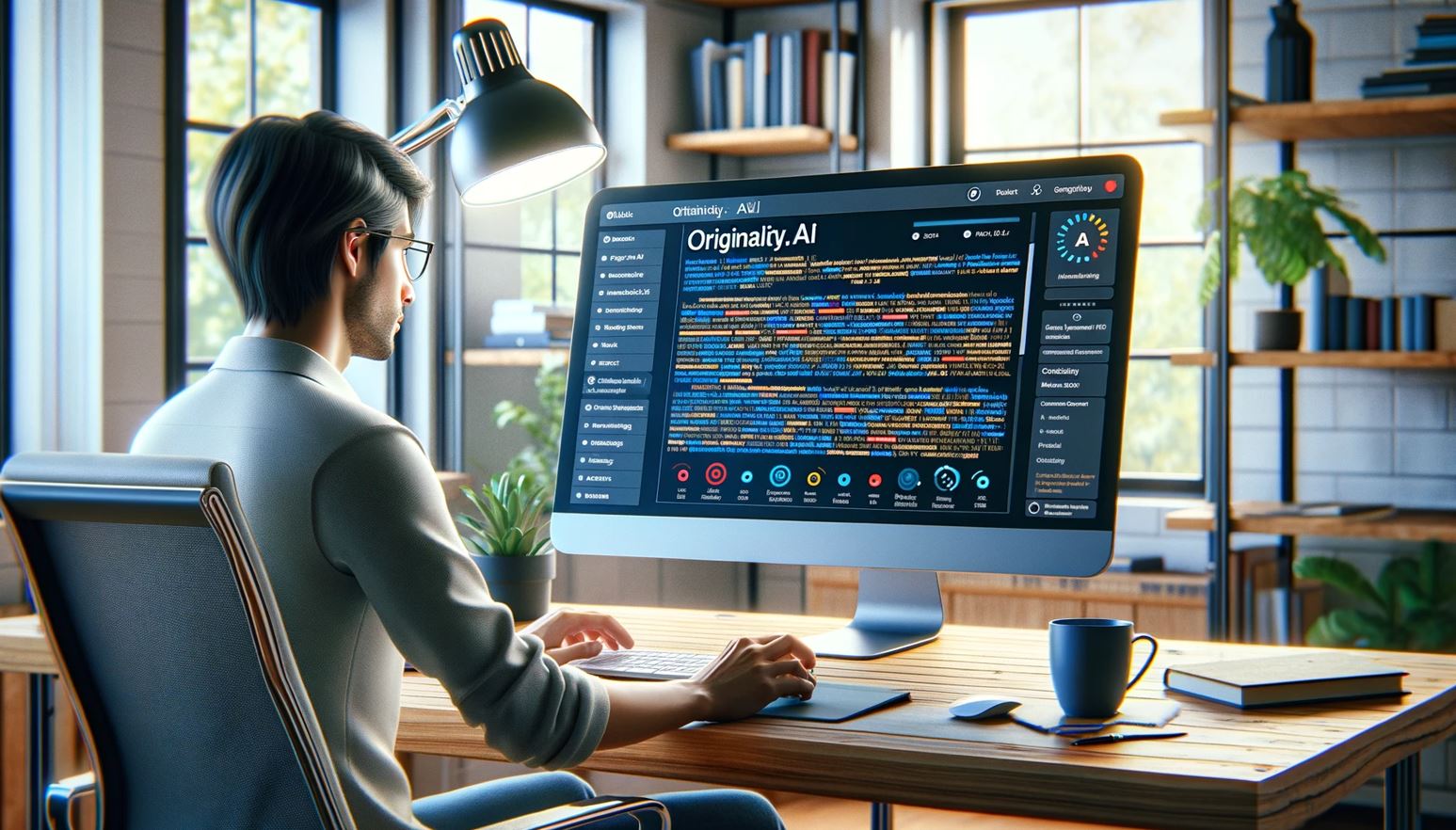
Misinformation And False Content
Sometimes, AI can create stories that aren’t true. These false tales spread quickly and can trick a lot of people. Imagine reading something online that looks real but is actually made up – like a lie about what’s happening in the world or who said what.
That’s the kind of sneaky stuff some AI programs can make.
AI doesn’t always know if it’s sharing truth or lies—it just does what it’s told to do by its programming. So when AI spits out wrong info on purpose, we call this disinformation.
It’s kind of like a robot lying to you with a straight face! Bad guys might use this to mess with important things like elections or stir up trouble between groups of people. And here’s the kicker: these made-up stories from AI might sound really believable, even more than deceptive statements from humans.
So why should we care? Well, think about how confusing it would be if no one could tell what was real news and what was fake news put out there by robots! It gets tough for everyone trying to figure out the truth, and that’s not good for any of us.
We’ve gotta stay sharp and learn how we can spot those phony facts thrown into our mix so they don’t fool us into believing nonsense or causing harm without even meaning to.
Lack Of Originality And Creativity
Just like spreading false information, AI-generated text can be dull and trite. It’s true that when a machine makes content, it might not think up fresh ideas like a person would.
This is where we hit a creativity deficit. AI just doesn’t have the personal touch we find in stories or articles written by real folks.
Machines are quick. They churn out words fast but often miss that spark of artistic creativity we love in good writing. They don’t understand feelings or what makes something truly special for someone – their emotional intelligence isn’t quite there yet.
Sure, they can mimic styles, but ask them to write something with heart. That’s tough for our robot pals. Overusing AI tools might even make it hard for writers to keep their own skills sharp and bright!
Ethical Concerns
AI can be pretty smart—like, scary smart. But here’s the kicker: sometimes it makes stuff up that sounds true but isn’t. That’s a big no-no when we’re talking about real facts and news.
It gets even trickier with all the moral stuff to think about. Imagine an AI writing stories that are super biased or just plain wrong. Yikes! We’ve got to make sure these clever bots don’t end up fooling us into believing things that aren’t true.
Plus, there’s this whole thing about stealing other people’s ideas without saying “please” or “thank you.” Not cool, right? And then, what if the AI messes up and someone gets hurt because of what it wrote? Or worse, if some bad folks use it to spread lies on purpose? We’re talking serious ethical dilemmas here, and nobody wants a sneaky robot making trouble.
So yeah, we’ve gotta keep our eyes peeled for any funny business coming from these text-generating whiz-kids.
Future Of AI-Generated Text
Peering into the crystal ball of tech, the future of AI-generated text is like uncharted territory – think Wild West but with robots slinging code instead of pistols. It’s a place where algorithms learn new tricks every day and where we’re all kind of learning the ropes as we go.
You’ll need sharp eyes and even sharper tools to keep the machine-written word in check without stifling its sci-fi coolness.
Potential Developments And Advancements
AI is growing smarter every day, especially in making things like pictures and answering questions. It’s also getting better at understanding language and creating its own stuff. Imagine a future where AI helps writers think of new ideas or even makes movies by itself! But we’ve got to watch this closely.
We need to make sure it’s used the right way so that it helps us more than it hurts.
We need to make sure it’s used the right way so that it helps us more than it hurts.
Machines are learning super fast now, thanks to deep learning and neural networks. They’re not just writing texts. They’re also whipping up code! This means in the future, they could do lots of jobs that humans do today.
So, we have to keep an eye on this tech and understand how to use it without causing problems or being unfair to people.
Need For Continued Monitoring And Detection
Machines are getting smarter, and they’re writing stuff that can fool us. Imagine a sneaky game of hide and seek but with words. We’ve got to keep our eyes peeled to spot the machine-made text in the wild.
That means always watching out for clues—little signs that something was typed up by a clever robot instead of a person. Why is this such a big deal? Well, if we can’t tell who’s who or what’s what, things could get messy with lies spreading around or homework not really being done by kids.
Think about it like we’re detectives on the lookout for tricky AI text trying to blend in. Our toolkit needs updating because these AIs aren’t slowing down. They learn fast! New tricks pop up all the time, which is why monitoring technology must stay one step ahead—or at least try its best.
Sure, some folks might think machines doing more writing isn’t so bad—less work for us, right? But hold on..what about creativity flying out the window or people stealing words and calling them their own? Those are some real head-scratchers we need to chew over as AI keeps chattering away.
Ethical Considerations For Its Use
Okay, let’s talk about the ethics of using AI to make text. We’ve got smart machines whipping up articles, stories, and even chats. Sounds cool, right? But hold on – there are some tricky parts we need to think about.
Picture this: someone uses AI to create fake news or copy someone else’s work without giving them credit. That’s a big no-no! It’s super important that everyone plays fair with these powerful tools.
So what do we do? Well, for starters, people making AI should mix it up with all kinds of different views and backgrounds. This way, the content stays real and unbiased. Also, being clear about where the content comes from is huge—it lets folks know if what they’re reading came from a person or a robot brain.
And you bet there needs to be rules in place so nobody uses these AIs for sneaky stuff like spreading lies or stealing ideas.
Let’s keep our eyes wide open and use tech responsibly! Because really, nobody wants a future filled with fake stories and stolen words – yikes!
Unveil Tips, Tricks, And Tools To Identify AI-Generated Text
Well, you’ve got the tools now. Spotting AI-written words can be a fun game to play. Just look out for things that seem too perfect or kind of robotic. Remember those handy tools like Copyleaks and GPTZero? They’re your best pals in this detective work.
And it’s super important to check this stuff out. We don’t want fake news to get us all confused, right? Plus, we have to keep it real with our own stories and ideas!
So go on, give it a try! You might just feel like a word wizard checking for that sneaky AI text. With practice and these tips up your sleeve, you’ll be spotting the fakes in no time flat.
Isn’t that cool? You’re learning to tell if a machine or a human spun those words together! Keep your eyes open—your brain will thank you for keeping things genuine and creative!
FAQs
1. What’s a quick sign that text might be made by AI?
Look out for phrases that seem too perfect or repeat a lot – like someone’s using the same old song and dance.
2. How can I tell if an article is written by a computer or a real person?
Check for any weird errors or places where it seems to ramble on without much point – kind of like when your Uncle Joe tells his fishing stories, you know?
3. Are there tools to help spot AI-generated text?
Yep, there are websites and apps out there designed just for playing detective with words – picture Sherlock Holmes but with more keyboard clicking.
4. Will I always be able to spot text created by AI?
Not always because sometimes AI writes as well as your top-of-the-class niece (sneaky bots!), so keep those eyes peeled.
5. Do all AIs write things that sound exactly the same?
Nope, not all – they come in different flavors, just like ice cream… but without the brain freeze!
Meet our resident tech wizard, Steve the AI Guy. Now, before you get any wild ideas, let’s clear up one thing – he’s 100% human! I mean, he’s got the work history to prove it. He spent a decade diving into the deep end of the tech industry doing business intelligence work, splashing around with two of the world’s largest business consulting companies, Deloitte and Ernst & Young. Learn More


